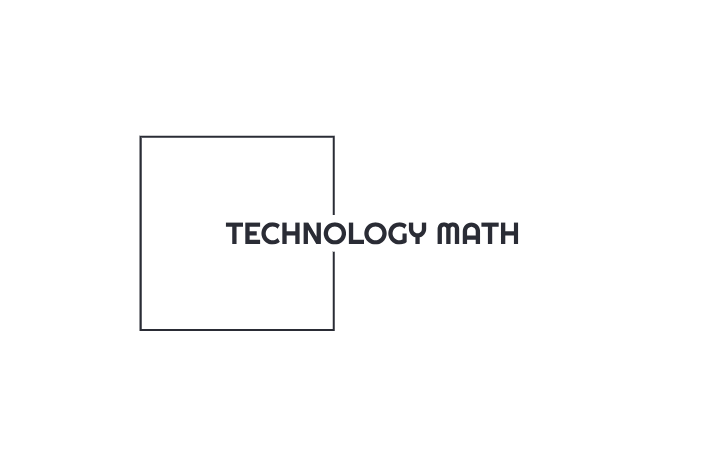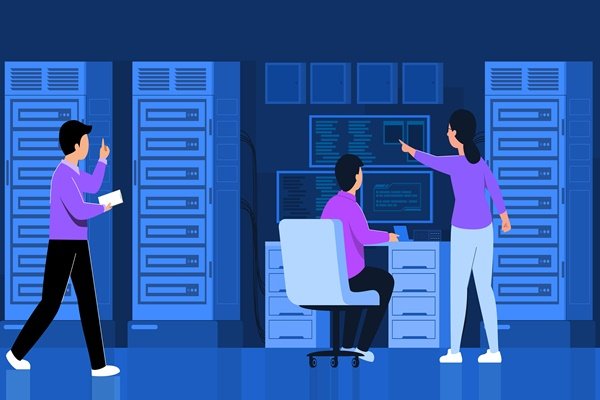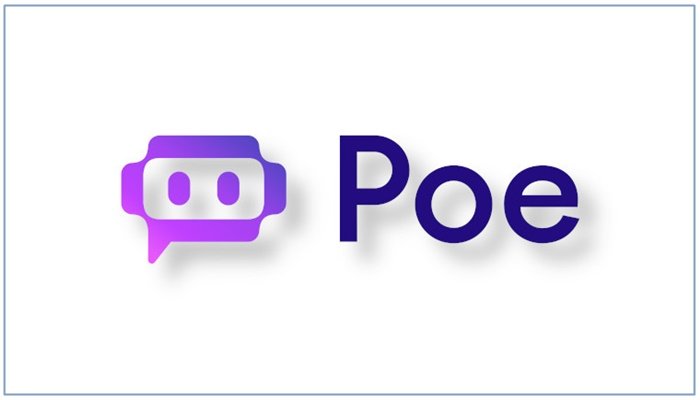
In today’s rapidly evolving digital landscape, the need for robust cybersecurity measures has never been more critical. With the increase in cyber threats, businesses are constantly seeking innovative ways to enhance their security operations while maintaining efficiency. One such solution that has gained significant attention is Cyberfusion. This approach has the potential to revolutionize how organizations manage their security operations, streamlining processes, improving efficiency, and ultimately providing a more secure environment. In this article, we will explore how Cyberfusion can achieve these goals and why it is becoming an essential tool in modern cybersecurity strategies.
Understanding Cyberfusion
Before diving into how Cyberfusion can streamline security operations, it is essential to understand what Cyberfusion is. Cyberfusion refers to the integration of various cybersecurity tools, technologies, and processes into a unified platform. This fusion allows for real-time data sharing, collaboration, and coordination between different security functions, such as threat detection, incident response, and vulnerability management. By breaking down silos and enabling seamless communication between different security components, Cyberfusion aims to create a more cohesive and efficient security operation.
The Challenges of Traditional Security Operations
Traditional security operations often involve a variety of tools and systems that operate independently. Each of these tools might be effective on its own, but the lack of integration and communication between them can lead to several challenges:
- Fragmented Data: In traditional setups, data is often scattered across different systems, making it difficult to get a comprehensive view of the security landscape. This fragmentation can result in blind spots where potential threats might go unnoticed.
- Inefficient Processes: When tools are not integrated, security teams often have to manually correlate data from different sources. This manual process is time-consuming and prone to errors, reducing the overall efficiency of security operations.
- Delayed Responses: In the event of a security incident, the lack of coordination between different tools and teams can delay response times. Every second counts during a cyber attack, and delayed responses can lead to more significant damage.
- Increased Complexity: Managing multiple security tools, each with its interface and configuration, adds complexity to security operations. This complexity can overwhelm security teams, leading to mistakes and overlooked threats.
How Cyberfusion Addresses These Challenges
Cyberfusion addresses the challenges of traditional security operations by integrating tools and processes into a single, cohesive platform. This integration offers several key benefits:
- Centralized Data: One of the primary advantages of Cyberfusion is the ability to centralize data from various sources. By bringing all security data into a unified platform, organizations can gain a holistic view of their security posture. This centralized approach makes it easier to identify potential threats and vulnerabilities, reducing the likelihood of blind spots.
- Automated Processes: Cyberfusion platforms often include automation capabilities that can streamline various security processes. For example, automated threat detection and response workflows can significantly reduce the time it takes to identify and mitigate threats. Automation also reduces the risk of human error, leading to more accurate and efficient operations.
- Faster Incident Response: With Cyberfusion, different security tools can communicate and collaborate in real-time. This real-time collaboration enables faster incident detection, analysis, and response. Security teams can work together more effectively, reducing the time it takes to contain and resolve security incidents.
- Simplified Management: By consolidating multiple security tools into a single platform, Cyberfusion simplifies the management of security operations. Security teams no longer have to juggle multiple interfaces and configurations, making it easier to maintain and optimize their security environment.
The Role of Cyberfusion in Threat Detection
Threat detection is a critical component of any cybersecurity strategy. Cyberfusion enhances threat detection capabilities by enabling the seamless integration of various detection tools and technologies. Here’s how Cyberfusion improves threat detection:
- Real-Time Data Correlation: Cyberfusion platforms can correlate data from multiple sources in real-time. This correlation allows for the quick identification of patterns and anomalies that might indicate a potential threat. For example, a Cyberfusion platform can automatically correlate network traffic data with user behavior analytics to detect unusual activity that could signal a cyber attack.
- Enhanced Visibility: With Cyberfusion, organizations gain enhanced visibility into their security environment. This visibility is crucial for identifying and responding to threats before they can cause significant damage. The centralized nature of Cyberfusion ensures that all relevant data is available in one place, making it easier to spot potential issues.
- Advanced Threat Intelligence: Many Cyberfusion platforms integrate with threat intelligence feeds, providing real-time updates on emerging threats. This integration ensures that security teams are always aware of the latest threats and can take proactive measures to protect their organization.
- Behavioral Analysis: Cyberfusion platforms often include advanced behavioral analysis capabilities. These capabilities allow for the detection of abnormal behavior that might indicate a compromised system or insider threat. By analyzing user and system behavior in real-time, Cyberfusion platforms can detect and respond to threats that might otherwise go unnoticed.
Improving Incident Response with Cyberfusion
Incident response is another area where Cyberfusion can significantly improve efficiency. When a security incident occurs, every second counts, and a swift response is crucial to minimizing damage. Cyberfusion streamlines incident response in several ways:
- Integrated Communication: During an incident, effective communication between different security teams is essential. Cyberfusion platforms facilitate this communication by providing a centralized platform where teams can collaborate in real-time. This integrated communication ensures that everyone is on the same page and can work together to resolve the incident quickly.
- Automated Response Workflows: Many Cyberfusion platforms include automated response workflows that can be triggered when specific conditions are met. For example, if a Cyberfusion platform detects a ransomware attack, it can automatically isolate the affected systems, notify the security team, and initiate the recovery process. Automation reduces the time it takes to respond to incidents and ensures that predefined response procedures are followed.
- Rapid Threat Containment: One of the key benefits of Cyberfusion is the ability to contain threats quickly. By integrating different security tools and processes, Cyberfusion platforms can automatically isolate affected systems, block malicious traffic, and prevent the spread of the attack. Rapid threat containment is crucial to minimizing the impact of a security incident.
- Post-Incident Analysis: After an incident has been resolved, it’s essential to conduct a thorough analysis to understand what happened and how it can be prevented in the future. Cyberfusion platforms provide detailed logs and reports that make post-incident analysis easier. These insights can help organizations improve their security posture and avoid similar incidents in the future.
Enhancing Vulnerability Management with Cyberfusion
Vulnerability management is a proactive approach to identifying and addressing potential weaknesses in an organization’s security infrastructure. Cyberfusion enhances vulnerability management by providing a unified platform for identifying, prioritizing, and mitigating vulnerabilities:
- Continuous Monitoring: Cyberfusion platforms often include continuous monitoring capabilities that scan for vulnerabilities in real-time. This continuous monitoring ensures that new vulnerabilities are identified as soon as they are introduced, allowing for timely remediation.
- Automated Patch Management: Keeping systems up to date with the latest patches is a critical aspect of vulnerability management. Cyberfusion platforms can automate the patch management process, ensuring that patches are applied promptly and consistently across all systems. Automation reduces the risk of human error and ensures that vulnerabilities are addressed as quickly as possible.
- Risk-Based Prioritization: Not all vulnerabilities are created equal, and it’s essential to prioritize them based on the level of risk they pose to the organization. Cyberfusion platforms can assess the risk associated with each vulnerability and prioritize remediation efforts accordingly. This risk-based approach ensures that the most critical vulnerabilities are addressed first.
- Comprehensive Reporting: Cyberfusion platforms provide detailed reports on the status of vulnerabilities and remediation efforts. These reports offer valuable insights into the organization’s overall security posture and help identify areas for improvement. Comprehensive reporting is essential for demonstrating compliance with security standards and regulations.
The Role of Cyberfusion in Compliance and Governance
Compliance with industry regulations and standards is a critical aspect of cybersecurity. Failure to comply with these regulations can result in significant penalties and damage to an organization’s reputation. Cyberfusion can help organizations meet compliance requirements by providing a unified platform for managing security operations and demonstrating adherence to regulatory standards:
- Centralized Compliance Management: Cyberfusion platforms can centralize compliance management by integrating various security controls and processes into a single platform. This centralization makes it easier to track compliance with industry regulations and ensure that all necessary controls are in place.
- Automated Compliance Audits: Conducting regular compliance audits is essential for ensuring adherence to regulatory standards. Cyberfusion platforms can automate the audit process, generating reports that demonstrate compliance with specific requirements. Automated audits reduce the time and effort required to prepare for compliance assessments.
- Policy Enforcement: Cyberfusion platforms can enforce security policies across the organization, ensuring that all systems and processes comply with regulatory requirements. For example, a Cyberfusion platform can enforce access controls, data encryption, and other security measures mandated by industry standards.
- Real-Time Compliance Monitoring: With Cyberfusion, organizations can monitor compliance in real-time, ensuring that any deviations from regulatory requirements are identified and addressed promptly. Real-time monitoring helps organizations stay compliant and avoid potential penalties.
Cyberfusion and the Future of Security Operations
As cyber threats continue to evolve, the need for more efficient and effective security operations will only increase. Cyberfusion represents a significant step forward in the evolution of cybersecurity, offering a unified platform that integrates various tools and processes into a cohesive whole. The benefits of Cyberfusion are clear: improved efficiency, faster incident response, enhanced threat detection, and better vulnerability management.
In the future, we can expect Cyberfusion platforms to become even more sophisticated, incorporating advanced technologies such as artificial intelligence (AI) and machine learning (ML) to further enhance security operations. These technologies can provide even greater automation, more accurate threat detection, and more effective response capabilities.
Conclusion
In conclusion, Cyberfusion is a powerful tool that can streamline security operations and improve efficiency in a variety of ways. By integrating different security tools and processes into a unified platform, Cyberfusion offers a centralized approach to threat detection, incident response, vulnerability management, and compliance. This integration leads to faster response times, more accurate threat detection, and a more efficient overall security operation.
As cyber threats continue to grow in complexity, the need for more sophisticated security operations will only increase. Cyberfusion represents a forward-thinking approach to cybersecurity, offering organizations the tools they need to protect themselves in an increasingly digital world. Whether you’re looking to enhance your threat detection capabilities, improve incident response times, or streamline your vulnerability management process, Cyberfusion offers a comprehensive solution that can help you achieve your security goals.






